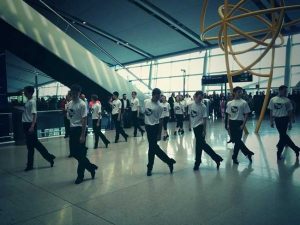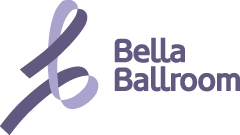Celebrate St. Patrick’s Day with Irish Dance
Irish Dancing
Thursday March 17th will mark 2016’s Saint Patrick’s Day and will give many a reason (or excuse) to celebrate. While most don’t even know the true history or reason for the holiday, most recognize its name and will participate by wearing green or drinking green beer. This year I encourage you to take advantage of the celebration to learn more about another facet of Irish celebration: Irish dancing.
 Traditional Irish dance forms can be divided into social dances and performance dances. Irish social dancing can be further divided into “céilí” and set dancing. “Céilí” depicts the formation dances where between two to sixteen dancers are arranged in formation. Céilí dances are lead by a caller who is usually the teacher or most experienced dancer of the group. Dancers keen to Céilí dancing often include embellishments. They might add spins or change the style of a swing depending on the skill of their dancing partner. Irish set dancing is what we might recognize as square dancing where couples dance arranged in a square. Social dance is very alive today in the Irish dancing community.
Traditional Irish dance forms can be divided into social dances and performance dances. Irish social dancing can be further divided into “céilí” and set dancing. “Céilí” depicts the formation dances where between two to sixteen dancers are arranged in formation. Céilí dances are lead by a caller who is usually the teacher or most experienced dancer of the group. Dancers keen to Céilí dancing often include embellishments. They might add spins or change the style of a swing depending on the skill of their dancing partner. Irish set dancing is what we might recognize as square dancing where couples dance arranged in a square. Social dance is very alive today in the Irish dancing community.
Most of the time when people think of Irish dancing they conjure an image of Irish step dancing. Irish step dance is a style of Irish performance dance characterized by a stiff upper body and quick, precise movements of the feet. It can be performed as a solo or as a group dance. Irish step dance is performed in most places with large Irish populations, and Irish stepdance competitions are held throughout the world. Costumes are a huge part of Irish presentation whether for a public performance or competition. Irish step dancing was made it’s mark on the world and became very popular with the touring famous show known as Riverdance. It became widely admired for the dances rapid leg and foot movements and sheer athleticism.
The early history of Irish dance was affected by the Irish population migrating and was influenced by early invasions. Each of the peoples that touched Ireland brought their music and dance. Over 2000 years ago the Celts arrived in Ireland from Europe and brought their own folk dances. Over the years, the dancing traditions of Ireland evolved in close association with the development of traditional Irish music. While the orgins of Irish dancing are not quite clear, it is known that Irish dancing was later influenced by dance forms from the Continent, especially the Quadrille. The Quadrille was a popular and fashionable dance in the late 18th and 19th century in Europe. It is performed like American square dancing (or Irish set dancing.)
Irish dancing masters that taught all over Ireland as late as the 18th and early 19th centuries also influenced the history and development of Irish dance. During this time dance competitions and Feis (traditional Gaelic arts and culture festivals) were held in small locations. There was little room for the dance masters to perform so they had to dance on tabletops or sometimes on top of a barrel. Talk about athleticism, balance and showmanship! Also, because of the small performance space, the dancing styles were very contained with hands rigid at the sides and a lack of traveling movement. As time passed, larger places for dance competitions were found so the dances evolved to include more movement and dancing across stages.
Today dancers all over the world preserve traditional Irish dancing. Dancers both of Irish decent and not uphold the beauty, grace, and athleticism of performance dance, and enjoy the traditional forms of social dancing. Riverdance is currently touring it’s “20th Anniversary Tour” around the world. Irish Dance has been adapted for fitness regimes and is taught in its traditional form in dance schools on an international scale. In a more modern format, Irish step dancing has made its preview in several flash mobs. Groups of people have gathered to showcase Irish stepdancing, commonly on or near St. Patricks day, to perform for unknowing public audience. What a fun and festive way to celebrate Irish dance and culture!
I hope this has left you with a little more knowledge about Irish culture and dancing in preparation for March 17th! Dance the day away decked in green and look for the leprechaun under the rainbow!
IRISH STEP FLASH MOBS:
Article by Ziva

